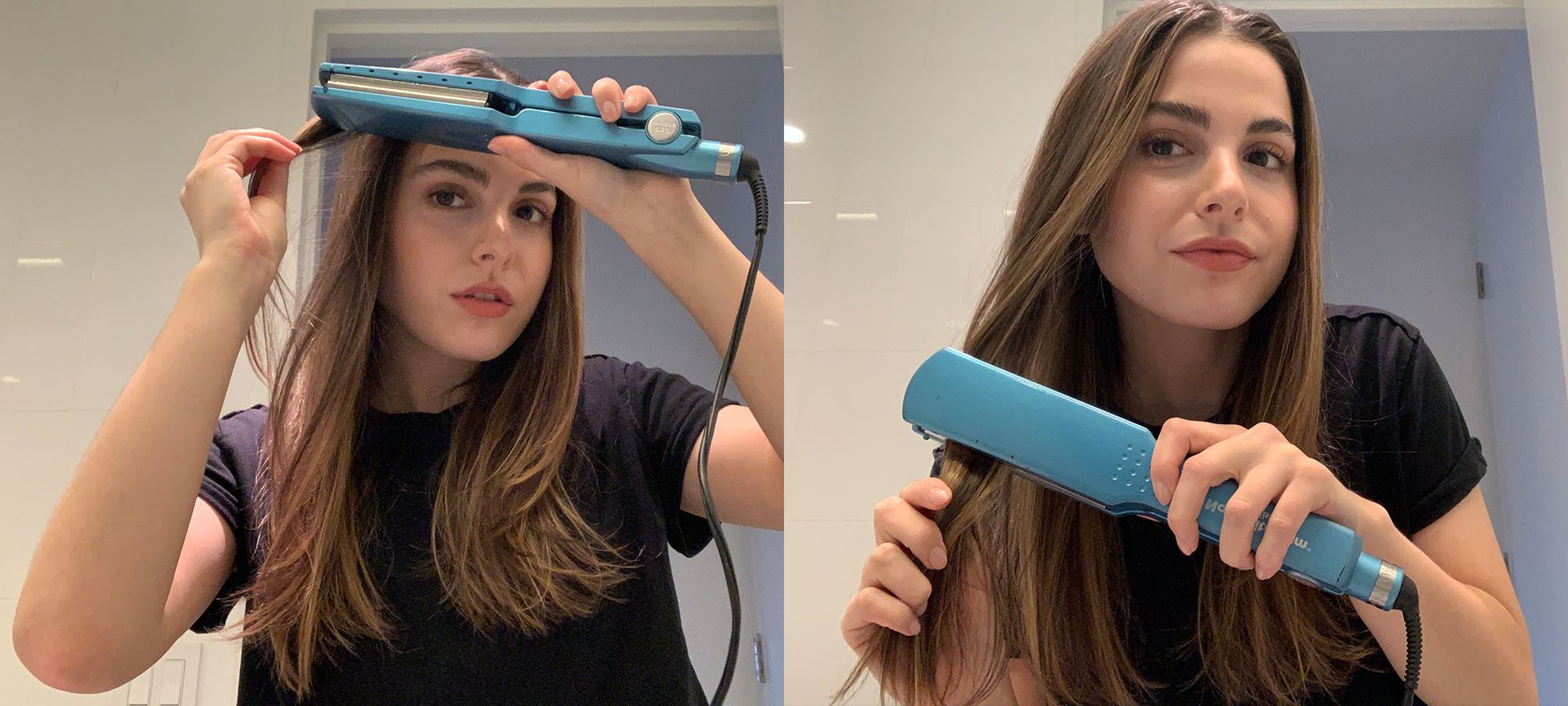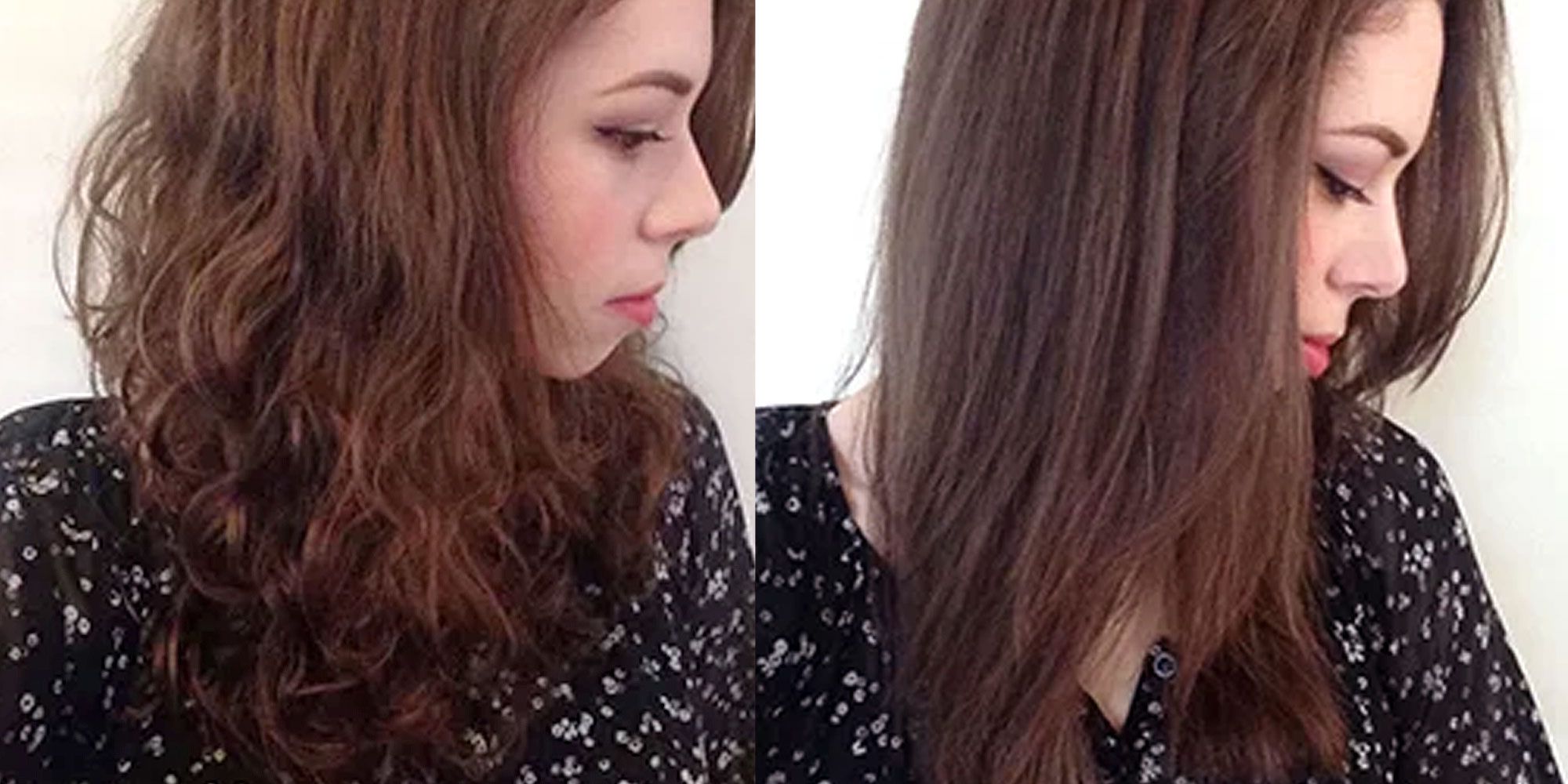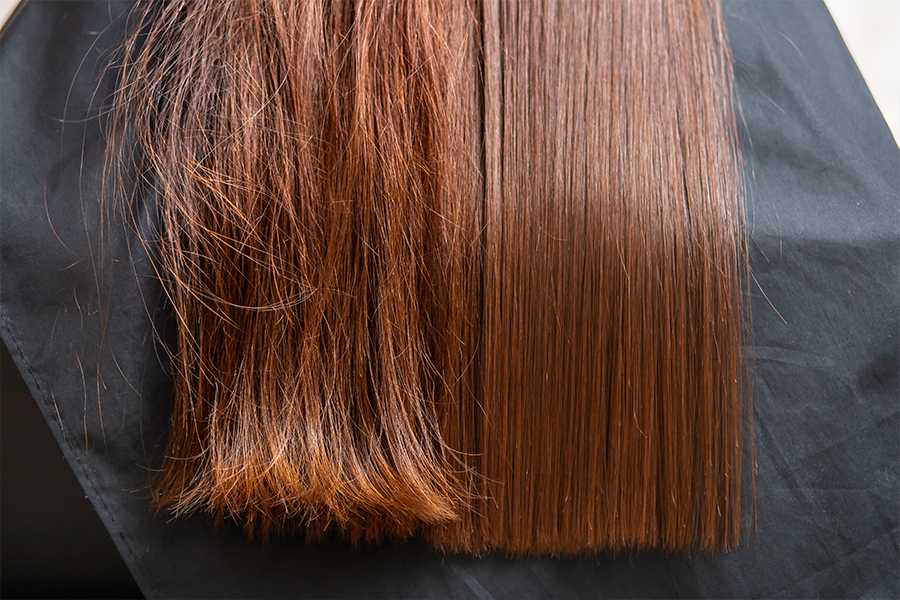In this article, you will learn about the potential damage that a hair straightener can cause to fine hair. We will discuss the factors that contribute to hair damage, such as heat settings, quality of the straightener, and how to protect your hair while using a straightener. By the end of this article, you will have a better understanding of how to care for your fine hair when using a hair straightener.
Understanding Fine Hair
Characteristics of Fine Hair
Fine hair is characterized by its texture, which is thin and delicate. It tends to have a smooth and silky appearance, but lacks volume and can easily become flat and limp. Fine hair strands have a smaller diameter compared to other hair types, which makes them more susceptible to damage and breakage.
Why Fine Hair is Vulnerable to Damage
Due to its fragility, fine hair is more prone to damage from external factors. The thin strands can be easily overworked and stretched, leading to breakage and split ends. Additionally, fine hair is more susceptible to heat damage, as it tends to have less moisture and natural oils, which provide a protective barrier for the hair shaft.
The Importance of Proper Haircare for Fine Hair
It is crucial to implement a proper haircare routine for fine hair to maintain its health and prevent damage. This includes using gentle products, avoiding excessive heat styling, and implementing protective measures during styling processes, such as using a heat protectant and choosing the right tools.
Hair Straighteners and Fine Hair
How Hair Straighteners Work
Hair straighteners, also known as flat irons, use heat to temporarily change the structure of the hair. They work by breaking down the hydrogen bonds in the hair shaft, allowing the hair to be reshaped into a straight form. This is achieved by gliding the heated plates of the straightener along the hair strands.
Potential Damage to Fine Hair
While hair straighteners can provide the desired straight hair result, excessive or improper use can cause damage to fine hair. The high temperatures of the straightener can strip the hair of its natural moisture, making it more prone to breakage and frizz. The repeated use of heat can weaken the hair shaft, leading to long-term damage.
Factors that Affect Damage
Several factors can influence the level of damage that a hair straightener can cause to fine hair. These include the temperature used, the frequency of use, the condition of the hair, and the quality of the straightener itself. Understanding these factors is crucial in minimizing damage and maintaining the health of fine hair.
Temperature Control and its Impact on Fine Hair
Temperature control is one of the most important features to consider when using a hair straightener on fine hair. Using excessively high temperatures can cause significant damage, while using too low temperatures may not effectively straighten the hair. It is recommended to start with a lower temperature and gradually increase it if necessary, to avoid unnecessary heat exposure.
Choosing the Right Hair Straightener for Fine Hair
Considerations for Fine Hair
When selecting a hair straightener for fine hair, there are certain considerations to keep in mind. Firstly, opt for a straightener with narrow plates, as they provide better control over the hair and minimize the risk of overheating. Additionally, a lightweight straightener can help prevent excessive strain on the hair strands.
Ceramic vs. Titanium Plates
Hair straighteners are commonly available with either ceramic or titanium plates. Ceramic plates are gentler on the hair and distribute heat more evenly, reducing the risk of hot spots. On the other hand, titanium plates heat up faster and can provide a smoother glide. For fine hair, it is recommended to use a straightener with ceramic plates to minimize damage.
Adjustable Heat Settings
Having an adjustable heat setting is essential when using a hair straightener on fine hair. This allows for greater control over the temperature and minimizes the risk of using excessively high heat. Ideally, choose a straightener with a wide range of temperature settings, so you can customize the heat to suit your hair’s needs.
Additional Features to Minimize Damage
Some hair straighteners offer additional features that can help minimize damage to fine hair. These may include ionization technology, which reduces frizz, and steam or moisture infusion, which adds hydration to the hair during the straightening process. These features can contribute to healthier-looking hair after straightening.
Preparation and Protection for Straightening Fine Hair
Haircare Routine Before Straightening
Before using a hair straightener, it is important to prepare the hair properly. Start with a gentle shampoo and conditioner that is suitable for fine hair. Apply a leave-in conditioner or a heat protectant product to provide an extra layer of protection from the heat of the straightener. This helps to minimize damage and reduce the risk of breakage.
Using Heat Protectant Products
Heat protectant products form a protective barrier on the hair, shielding it from the direct heat of the straightener. They not only minimize damage to the hair shaft but also help to retain moisture and prevent frizz. When using a heat protectant, ensure that it is evenly distributed throughout the hair for maximum protection.
Optimal Sectioning and Clipping Techniques
Sectioning the hair and using clips can make the straightening process more manageable and efficient, especially for fine hair. Smaller sections allow for better control and ensure that each strand receives even heat distribution. Use hair clips to separate the hair into manageable sections, starting from the bottom layers and gradually working your way up.
Avoiding Over-straightening
When straightening fine hair, it is crucial to avoid excessive heat exposure and over-straightening. Over-straightening can be detrimental to the health of fine hair, as it can lead to increased breakage and loss of natural texture. Instead, focus on achieving a natural and smooth look, without completely altering the hair’s natural structure.

Proper Technique for Straightening Fine Hair
Using the Right Temperature
When straightening fine hair, it is important to find the right temperature that effectively straightens the hair without causing excessive damage. As a general guideline, start with a lower temperature and gradually increase it if necessary. Pay attention to the hair’s response to the heat and adjust accordingly to minimize the risk of damage.
Applying Even Pressure and Glide
To achieve optimal straightening results with minimal damage, it is important to apply even pressure and maintain a smooth glide while straightening the hair. Avoid pressing down too hard on the hair strands, as this can cause unnecessary strain and tension. Instead, use a gentle and controlled motion to glide the straightener through the hair.
Avoiding Excessive Pulling or Tugging
Fine hair is more susceptible to breakage, so it is important to avoid excessive pulling or tugging while straightening. Gently glide the straightener through the hair, ensuring that there are no tangles or knots that may require excessive force to detangle. If you encounter any resistance, stop and comb through the hair before continuing.
Using Comb Attachments or Brushes
Using a comb attachment or a flat paddle brush while straightening can help to distribute the heat evenly and minimize damage. These tools can also detangle the hair and ensure a smooth glide of the straightener. When using a comb attachment, avoid pressing too hard on the hair to prevent unnecessary tension and breakage.
Minimizing Damage and Enhancing Long-term Hair Health
Limiting Frequency of Straightening
One of the most effective ways to minimize damage to fine hair is by limiting the frequency of straightening. Excessive heat exposure can weaken the hair strands over time, leading to long-term damage. Try to find a balance between styling and allowing your hair to rest and recover from the heat.
Conditioning and Moisturizing Fine Hair
Conditioning and moisturizing fine hair are essential to maintain its health and minimize damage. Look for lightweight and hydrating conditioners that won’t weigh down the hair. Additionally, consider using deep conditioning treatments and leave-in conditioners to provide extra nourishment and moisture to the hair.
Avoiding Excessive Heat Exposure
Aside from limiting the frequency of straightening, it is important to avoid excessive heat exposure from other sources, such as blow dryers and curling irons. These tools can also cause damage to fine hair if used improperly or excessively. Whenever possible, embrace natural hairstyles and air-drying methods to minimize heat exposure.
Repairing and Nourishing Products for Fine Hair
To address existing damage and nourish fine hair, consider incorporating repairing and nourishing products into your haircare routine. Look for products that contain ingredients such as keratin, amino acids, and natural oils, which can help strengthen the hair shaft and promote overall hair health.
:max_bytes(150000):strip_icc()/ghdplatinumstylerflatironresultsbeforeafter-c9f095601c934167838956e468634123.jpg)
Alternatives to Hair Straighteners for Fine Hair
Using Ceramic or Ionic Hair Brushes
Ceramic or ionic hair brushes can be a gentle alternative to hair straighteners for fine hair. These brushes emit negative ions that help to smooth the hair and reduce frizz, without the need for excessive heat. They can be used to straighten and style the hair, while minimizing damage and maintaining the hair’s natural texture.
Blow-drying Techniques for Straightening
Blow-drying can be another alternative to using a hair straightener on fine hair. By using a round brush and directing the airflow downwards, you can achieve a straightened look with less heat exposure. It is important to use a heat protectant and maintain a safe distance between the blow-dryer and the hair to prevent damage.
Chemical Straightening Options
Chemical straightening treatments, such as keratin treatments or relaxers, can also be considered for long-lasting results. However, it is important to note that these treatments can have harsh chemicals and may require professional application. It is crucial to consult with a trusted hairstylist and consider the potential risks before proceeding with chemical straightening.
Natural Methods for Straightening Fine Hair
If you prefer to avoid heat styling altogether, there are natural methods to achieve straighter hair. These include techniques such as wrapping the hair overnight or using natural ingredients like aloe vera or coconut milk to straighten the hair temporarily. While these methods may not provide the same level of straightness as a hair straightener, they can help reduce damage and maintain the hair’s natural health.
Maintaining a Healthy Haircare Routine for Fine Hair
Regular Trims to Avoid Split Ends
Regular trims are essential for fine hair to avoid the accumulation of split ends. Split ends can make the hair appear frizzy and dull, as well as contribute to breakage. Schedule regular trims every 8-12 weeks to prevent split ends from traveling up the hair shaft and causing more damage.
Appropriate Shampooing and Conditioning
Using the right shampoo and conditioner for fine hair is important to maintain its health and avoid excessive product buildup. Look for lightweight formulas that provide hydration without weighing down the hair. Additionally, avoid over-washing the hair, as fine hair tends to get greasy more quickly, which can lead to oiliness and limpness.
Gentle Towel Drying and Styling
When towel drying fine hair, it is important to be gentle to prevent unnecessary breakage. Instead of vigorously rubbing the hair, gently squeeze out excess moisture using a microfiber towel or an old t-shirt. Similarly, adopt gentle styling techniques, such as using wide-toothed combs or detangling brushes, to minimize tension and breakage.
Avoiding Hairstyles that Cause Tension or Breakage
Certain hairstyles, such as tight ponytails or braids, can cause tension and breakage to fine hair. Avoid wearing hairstyles that pull on the hair too tightly, especially for extended periods. Opt for looser styles or hairstyles that distribute the tension evenly, to minimize damage and maintain hair integrity.

Tips for Achieving Straight Hair without Damage
Using Heatless Straightening Methods
To achieve straight hair without using heat, consider heatless straightening methods. These include techniques such as hair wrapping, using flexi rods, or sleeping with braids. These methods may take longer to achieve the desired result but can minimize damage to fine hair.
Avoiding Excessive Hair Products
Using excessive hair products, such as styling gels or mousses, can weigh down fine hair and make it appear greasy or limp. Avoid overloading the hair with unnecessary products, and opt for lightweight formulas that provide hold and control without making the hair heavy.
Protective Hairstyles for Fine Hair
When not styling your hair, consider protective hairstyles that minimize manipulation and damage. These can include wearing the hair in loose buns, braids, or updos that protect the ends and minimize friction. Protective hairstyles help maintain the hair’s health and prevent breakage.
Implementing a Balanced Diet for Hair Health
Proper nutrition plays a significant role in maintaining the health of fine hair. Ensure you have a balanced diet that includes nutrients, such as vitamins A, C, E, biotin, and omega-3 fatty acids. These nutrients promote overall hair health and contribute to stronger and more resilient hair.
Conclusion
Can a hair straightener damage fine hair? The answer is yes, but with proper care and technique, the risk of damage can be minimized. Understanding the characteristics of fine hair and its vulnerability to damage is the first step towards maintaining its health. By choosing the right hair straightener, preparing and protecting the hair properly, and using the correct technique, you can achieve straight hair without compromising its strength and vitality. Remember to limit the frequency of straightening, nourish and moisturize the hair, and implement alternative methods when possible. Finding the balance between styling and hair health is essential for maintaining the integrity of fine hair and achieving its desired look.






